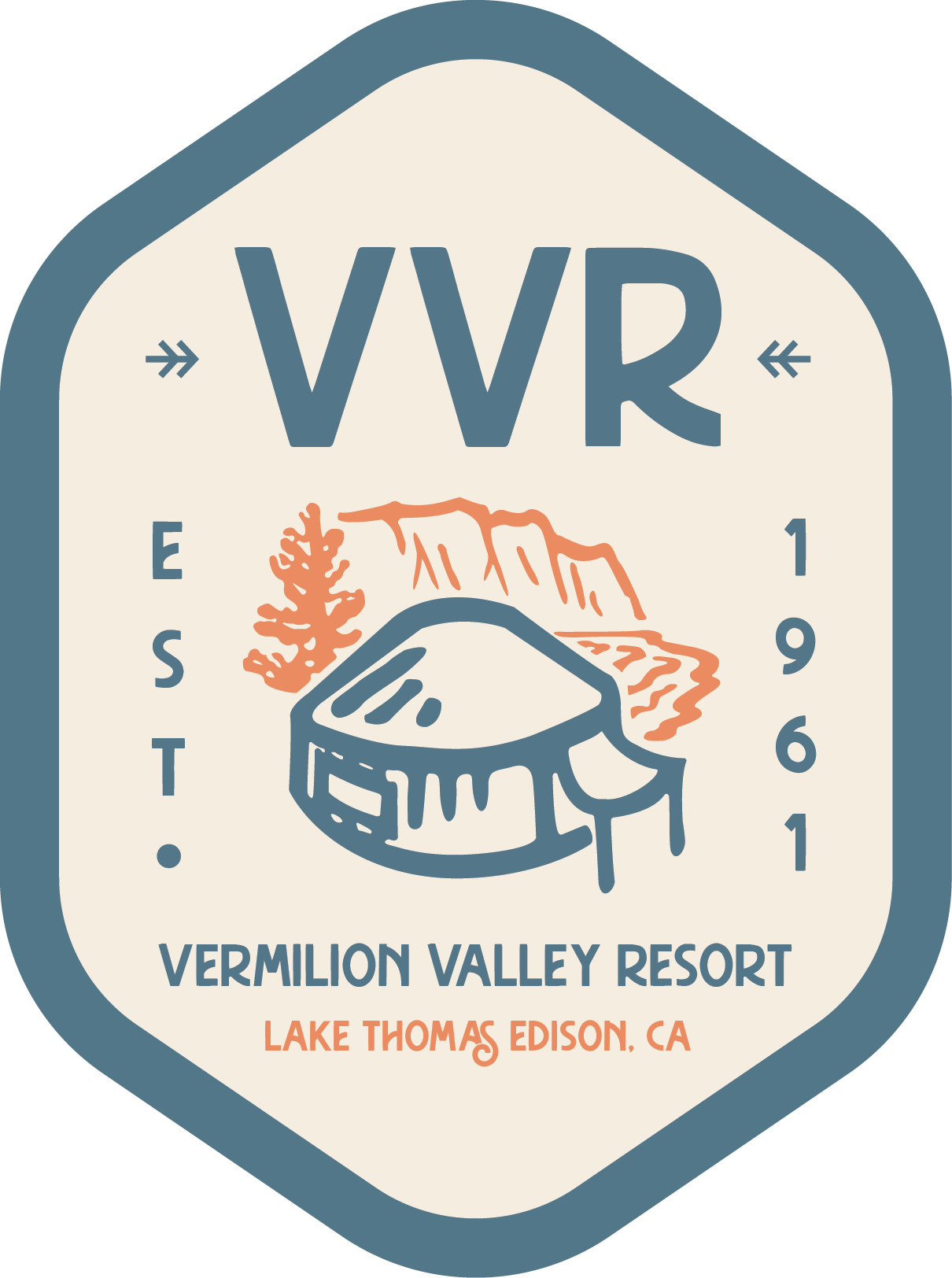Hiking the John Muir Trail? Here’s What You Need to Know!
Planning on hiking the John Muir Trail? This guide covers it all, from permits to resupplies, to help you conquer this iconic trail.
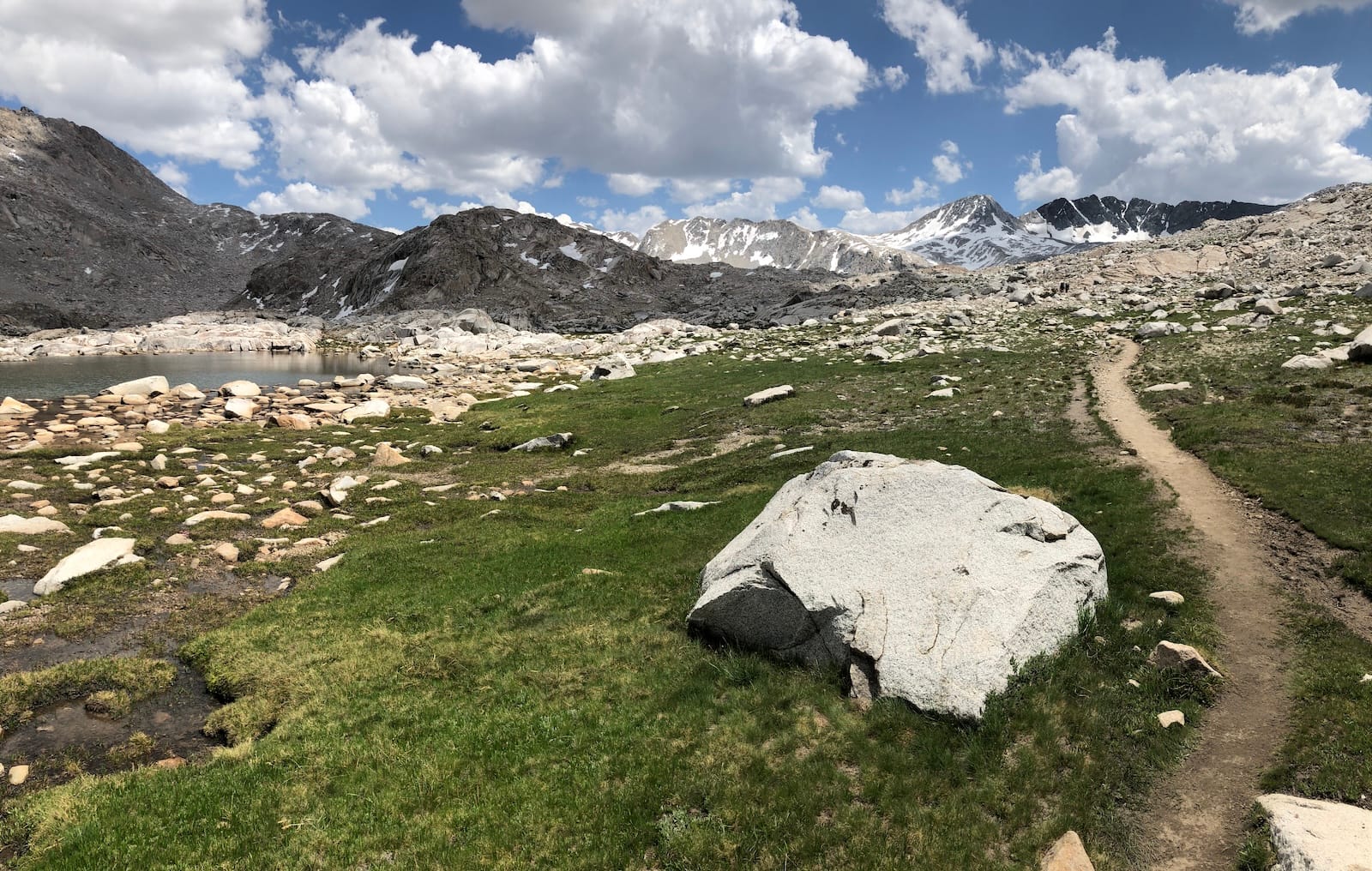
Imagine this. You're standing at the edge of Yosemite Valley, with a meticulously organized pack and a racing heart. It's finally time for you to start hiking the John Muir Trail! Roughly 211 miles long, this journey winds through some of the most beautiful and remote wilderness in the Sierra Nevada. The JMT isn't just a hike, it's a rite of passage for hikers from around the world.
If you’re planning your first backpacking trip on this historic trail, this guide is for you. We’ll walk you through the history of the trail, how to prepare, what to expect, and where to find community and comforts along the way.
Following An Ancient Path
The John Muir Trail was named after a man who was a fierce advocate for wild places. His love for Yosemite, Kings Canyon, and Sequoia National Parks is the reason this trail was officially sanctioned and funded by the State of California.
But, long before the JMT was mapped, signed, and celebrated by backpackers, it was known by the name Nüümü Poyo, or “People’s Trail.” An ancient route created and used by the Paiute and other Indigenous tribes for migration, trade, and connection.
Hundreds to thousands of years ago, this path served as a lifeline, a spiritual experience, and a testament to the tribes' deep connection with nature. Hiking the John Muir Trail is a challenging trek that winds through high mountain passes and alpine valleys that've inspired ancient and modern travelers.
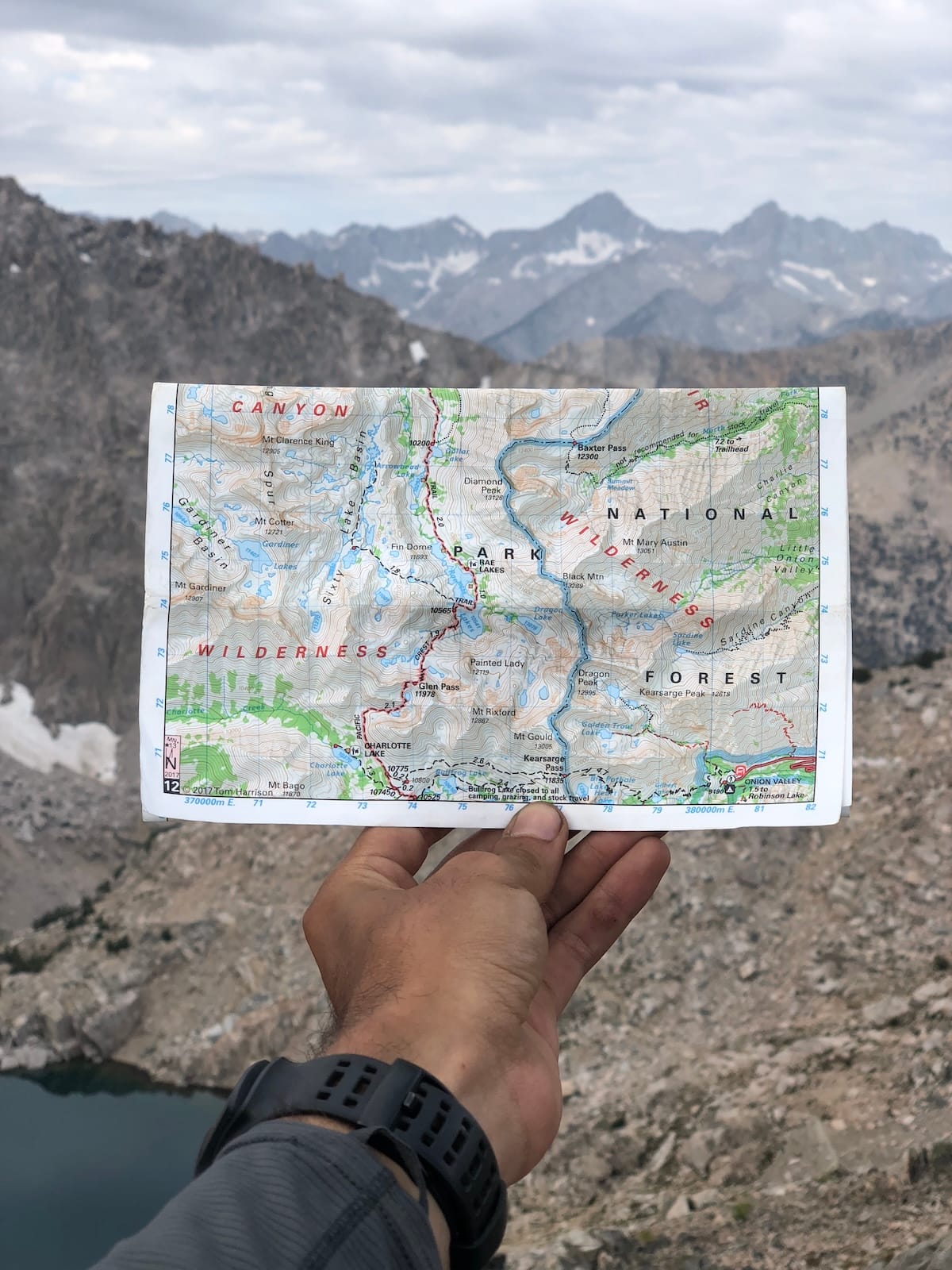
As you're hiking the JMT, you’re walking in the footsteps of generations who've known this land intimately. Every granite ridge and jaw-dropping vista along the way whispers stories older than any map.
So take a moment, or several, along the way. During sunrise over Donahue Pass or while dipping your toes in Lake Edison at VVR, spend some time reflecting on the legacy beneath your feet. The JMT is more than a trail. It’s a living history, and a community that you're about to become a part of.
Fun fact: Any obsidian found along the trail (typically around the east-west passes such as Bishop or Kearsarge, or around Lake Edison at VVR) was brought here by Indigenous people. None of it is naturally occurring. Please leave these artifacts where you find them.
Planning Your First JMT Adventure
This is the kind of trip that takes extensive planning and preparation, along with a bit of luck. Be sure you have all the essentials to make your thru-hike as pleasant as possible.
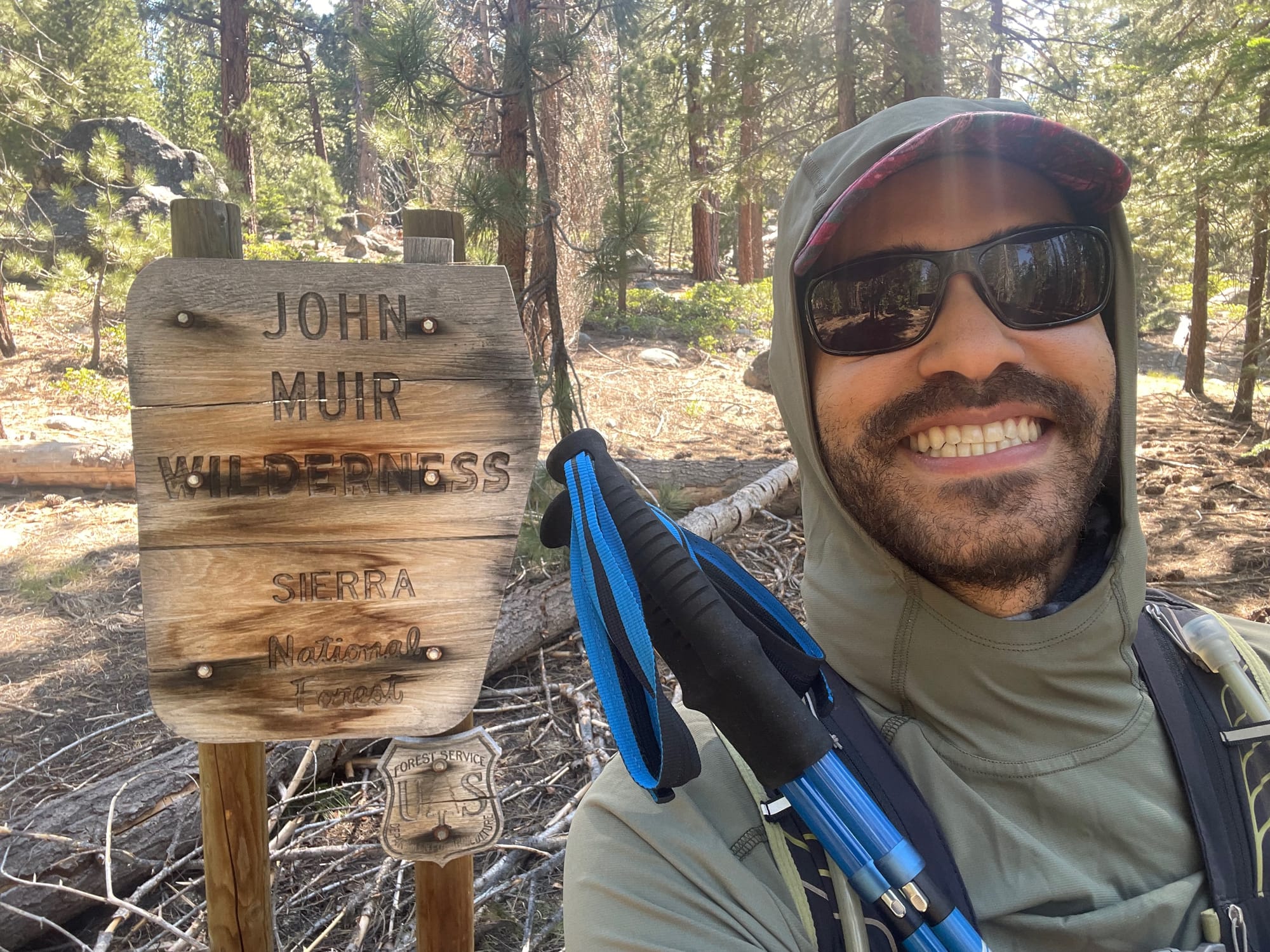
When To Start Hiking The John Muir Trail
Most hikers aim for July through September, when the snow has melted and the weather is (fairly) friendly. But every hiker is different, and every season has its quirks.
It is possible to start hiking the JMT as early as mid-June (most years). Starting this early means trekking through freezing temps, deep snow, and icy conditions. If you're hiking in the early season, get comfortable using snow gear like crampons and/or an ice axe before you leave.
Come July, the snow melts, and bugs (especially mosquitoes) can make a hiker's day quite miserable through about mid-July. If you'll be out there during this time, bring plenty of bug spray, long sleeves, and mosquito netting.
August is generally the most comfortable time to hike the JMT. However, wildfires and smoke can be a problem in the mid-to-late season, so keep an eye on trail conditions and have a plan B.
Permits: The First Big Hurdle To Hiking The JMT
Getting a permit to hike the JMT is like winning the lottery, literally. In fact, only about 1% of those who apply actually receive a full southbound permit for this trail. If you’re hiking Southbound (SOBO), you’ll need to apply for the lottery through recreation.gov about 24 weeks in advance. The SOBO route is considered the "traditional start" of the JMT, and if you like meeting fellow hikers along the way, this is the way to go. For this route, you can choose to start in Yosemite Valley or Tuolumne Meadows.
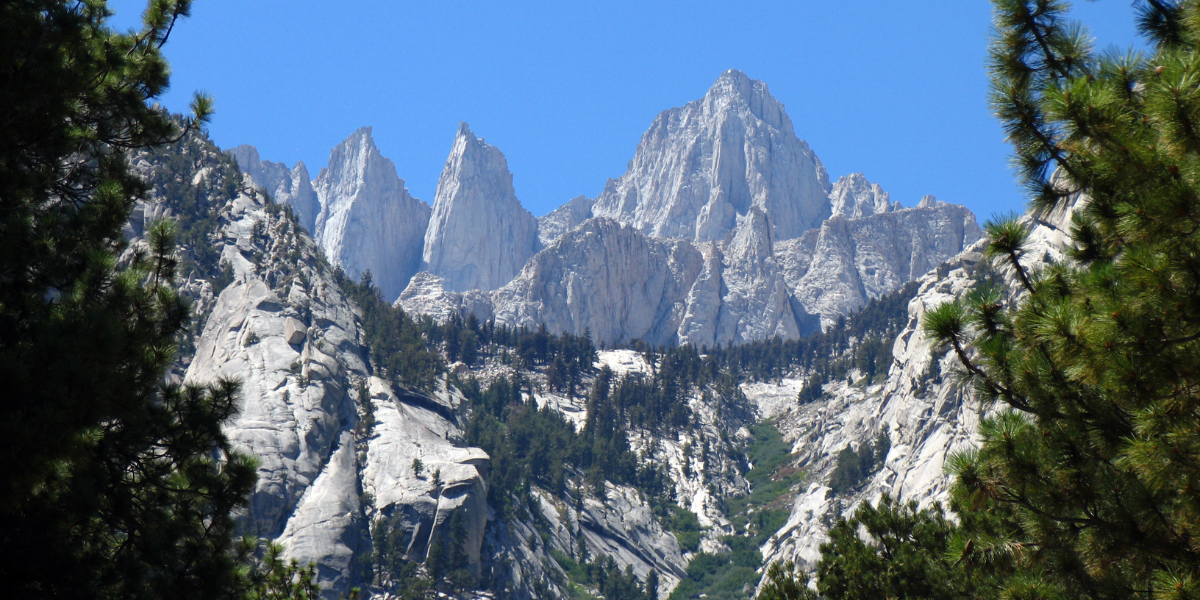
Northbound (NOBO) hikers start at Whitney Portal and apply through recreation.gov six months in advance. You can also go NOBO on the JMT starting from Cottonwood Pass or Cottonwood Lakes trailheads. The NOBO route can be more difficult for hikers as it starts with the most strenuous section.
Pro tip: You can also try to grab a "walk-up" permit online if the lottery doesn't come out in your favor. The more flexible you are, the better your chances, so be open to alternative start dates or trailheads.
What to Pack for Hiking the John Muir Trail
Packing for the JMT is a balancing act between comfort and weight. You’ll want to keep your base weight (weight of your gear without food/water) around 20 lbs. With food and water, aim for no more than 25% of your body weight. For most people, that equals about 34-40lbs.
Some Basic Necessities:
- Bear canister (required)
- Water filter or purifier
- Tent & Sleep Set-Up
- Layers for cold nights and hot days
- Trekking poles
- Navigation and communication tools (map, compass, smartphone with trail apps, GPS satellite communicator)
- First aid kit and blister care (foot injuries are one of the top reasons people have to end their hike early).
The rest of what you'll need depends on several factors. Researching and testing gear (especially for first-time backpackers) plays a major role in a hiker's success on the trail. Make sure to consult several resources, like blogs, books, guides, and forums, when deciding what to pack.
And yes, you’ll probably overpack the first time. Everyone does. That's why we recommend testing your pack and shoes on a shorter trip before hiking the John Muir Trail. If you already know what works for you (especially with shoes), stick with it. Comfort is key.
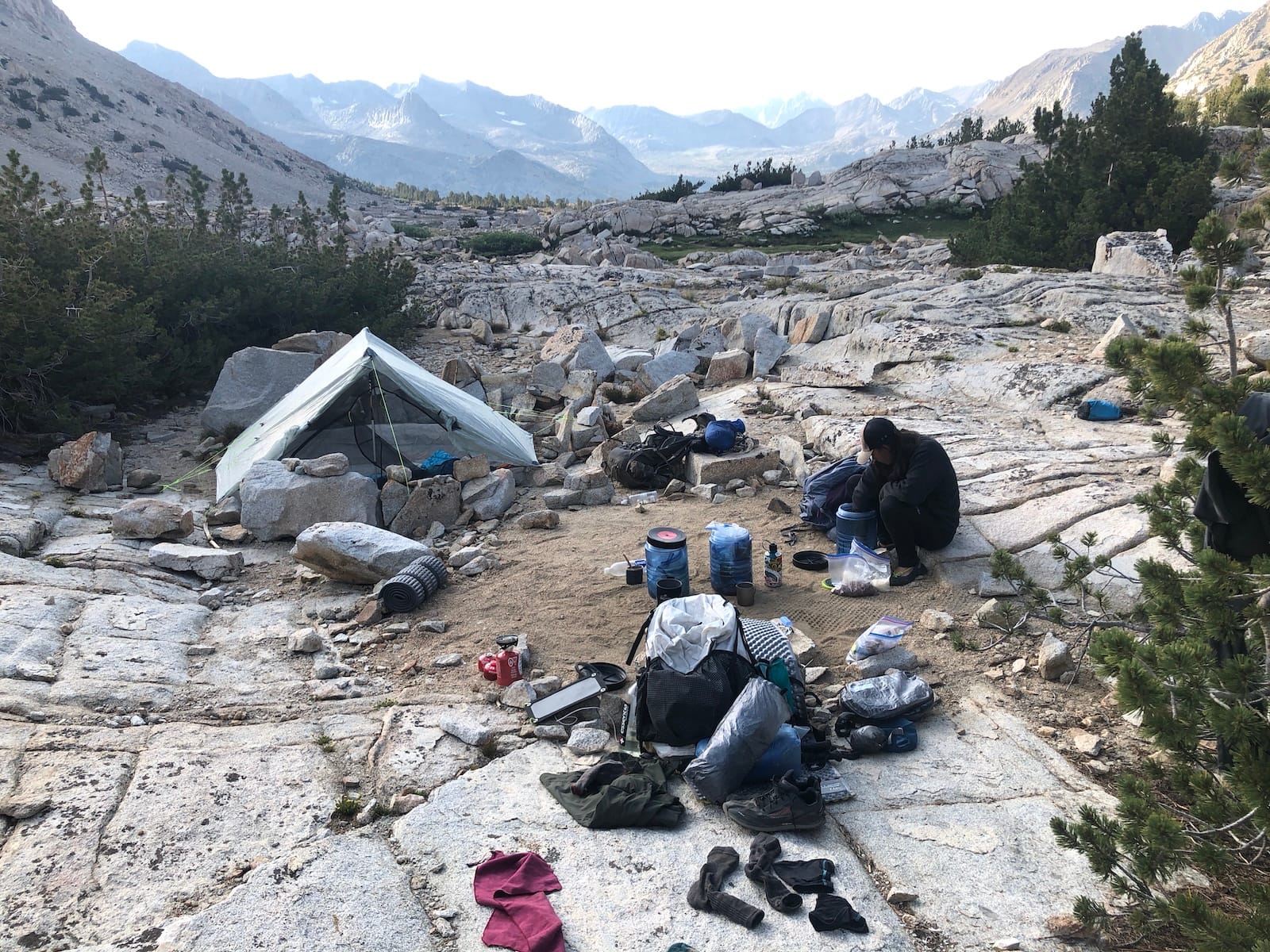
Wildlife In The Wild
When you step out on a journey like hiking the John Muir Trail, it's important to be familiar with the wildlife you may come across.
Mammals
Black bears, mule deer, marmots, pikas, coyotes, and mountain lions all roam the Sierra Nevada. Black bears are especially prevalent near Yosemite and popular campsites. The vast majority of people who practice standard bear safety don't have any issues.
Mule deer are often seen grazing quietly in meadows, and marmots are bold and curious creatures. Some are even brave enough to waddle up to your lunch spot. Pikas are a shy rodent, but can sometimes be spotted at dawn or dusk. Mountain lions are rare and elusive; most hikers will never see one.
It's best practice to never feed wild animals, even the cute furry ones. If they get used to associating people with food, they can become a nuisance or a deadly threat.
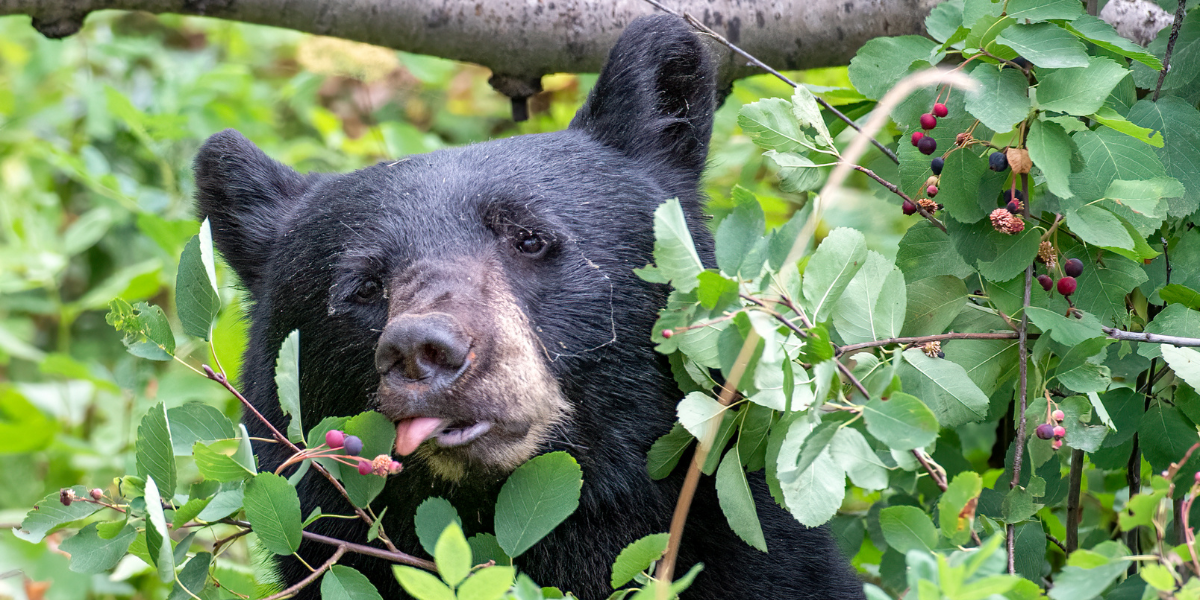
Birds On The JMT
Wild birds are a sight to behold! While hiking the John Muir Trail, try to spot some of these: Steller's jays, Clark's nutcrackers, American dippers, and Raptors.
The jays are loud, flashy, and commonly found in forested areas. Clark's nutcrackers are specialists in high-elevation living and have a knack for storing seeds. You can catch American dippers diving into streams, and raptors like hawks and eagles soaring above passes and ridgelines.
Reptiles and Such
While most of the crawly things along the JMT aren't too scary, there are rattlesnakes in the lower elevations. Watch your step around these venomous noodles. Along the trail, there are also several types of lizards, frogs, and salamanders darting between rocks and streams.
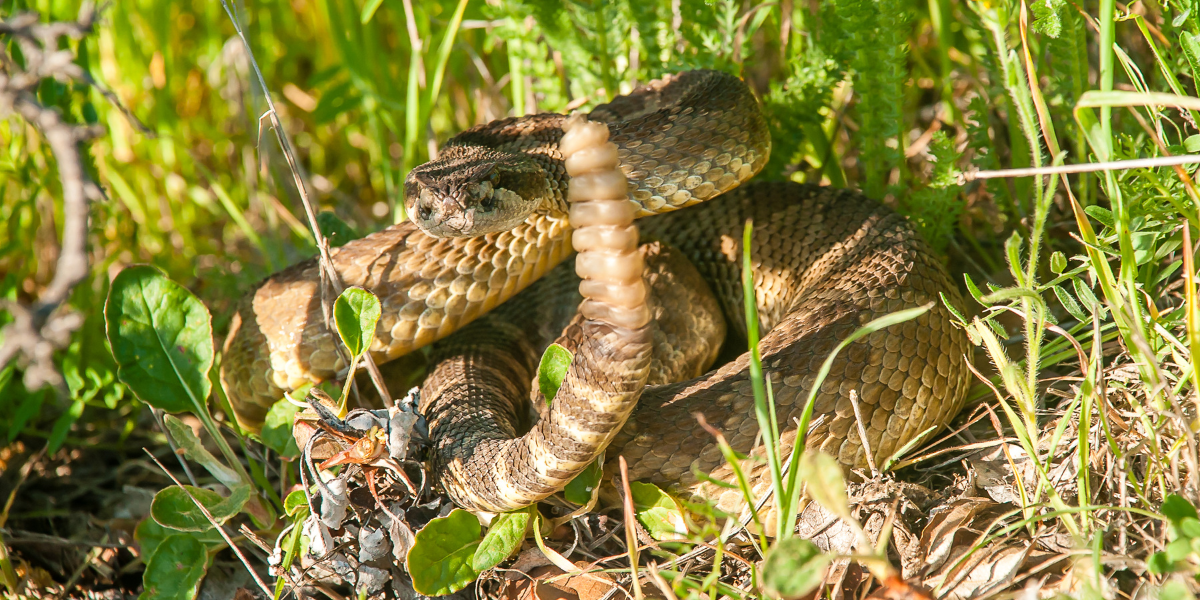
Resupplying Along The JMT
Scheduling resupply stops along the JMT is so important! Not only is it impossible to carry 20+ days of food and water, but resupply stops also give you a chance to reset. Have a meal that wasn't dehydrated first, and pick up that fresh bucket of snacks you lovingly packed for yourself. Along your route, there are six opportunities to resupply and rest.
All stops that we talk about have a "hiker box" (ask an employee) where hikers donate extra or unwanted items that other hikers can take for free. Each resupply stop has different requirements for packages, so be sure to read each one's instructions thoroughly and confirm directly with the stop.
Tuolumne Meadows
Right around mile 23 on the JMT, you'll come across your first resupply stop, Tuolumne Meadows. The general store here has basic groceries, snacks, and cold drinks for purchase. There is also a local post office where you can pick up a resupply and ship out postcards or extra gear.
If you're craving a hot meal made in a kitchen, top off your trip with a treat at the local grill. Their season typically runs from late June through September. Check the Yosemite NPS website for up-to-date weather and opening date info.
Stopping At Red's Meadow
Red’s Meadow is a favorite stop of JMT and PCT hikers alike, and it's just a short walk off the trail at mile 60. Here you can find everything a tired backpacker could want: meals at the Mule House Café, showers, laundry, and a general store packed with trail essentials. You can mail a resupply package here (just be sure to follow their instructions, online), or grab snacks, fuel, and drinks from the store.
A Day At Mammoth Lakes
For those who need a little luxury on the trail, Mammoth Lakes is it! To get here, hikers either catch a shuttle from Red's Meadow (between July and early September) or hike in via the Mammoth Pass Trail.
Once in town, you'll find free local transit, gear shops, grocery stores, souvenirs, and lodging. Check out local hot spots like Stellar Brew and Wild Willy's Hot Springs, or catch the latest summer blockbuster at the movie theater before heading back out to the wilderness.
The VVR Experience
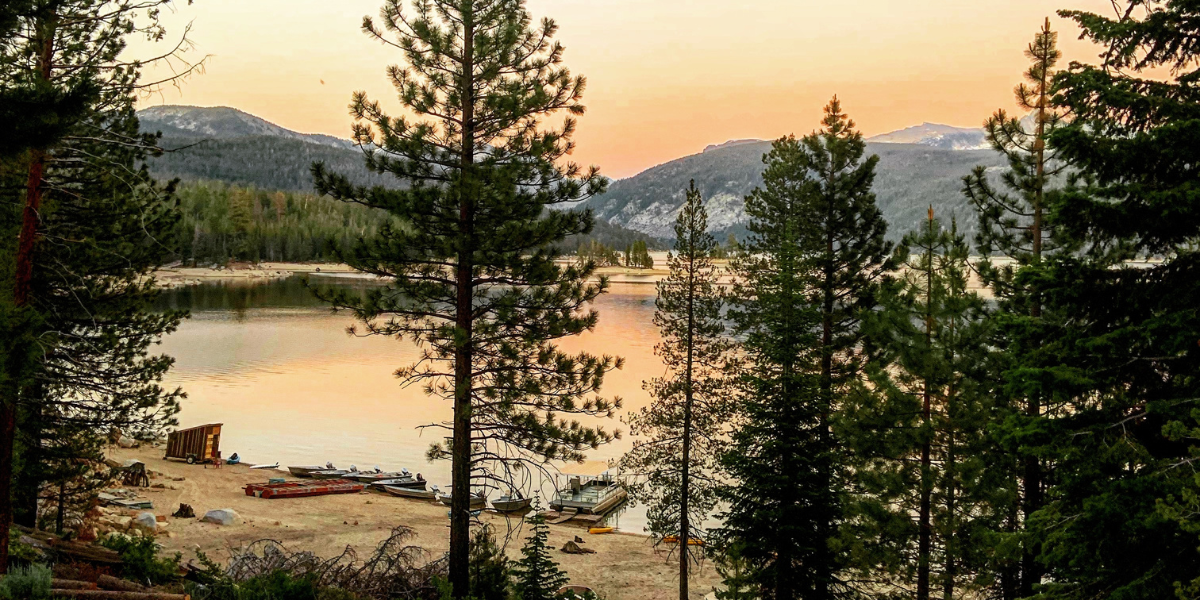
Stopping at Vermilion Valley Resort is like stepping into a backcountry oasis. After 88 miles of trail dust and ramen noodles, hikers are greeted with a free beverage, home-cooked meals, and a warm atmosphere that’s hard to pass up. You can camp in Mushroom City for free, grab a bed in the hiker hostel tent, or splurge on a private room. You can either restock in the store or send a resupply bucket/box at least 2 weeks before your arrival, so it's waiting when you get there.
VVR offers a chance to recharge, physically and emotionally. With nightly campfires, shared meals, and trail stories, a sense of camaraderie is created that turns strangers into a trail family. That's what makes VVR one of the most memorable stops for those hiking the JMT and PCT.
Resupplying at Muir Trail Ranch
Located around mile 108, Muir Trail Ranch (MTR) is a rugged but reliable resupply option for JMT hikers. It’s not a full-service stop like VVR, but it does offer resupply bucket pickup, basic amenities like charging stations, and a hiker box that’s often full with trail treasures. At MTR it's important to ship your bucket well in advance and follow their specific labeling instructions. This stop is a solid choice if you’re trying to minimize detours and keep moving.
Last but not Least, Onion Valley
If you’re running low on supplies after MTR or just need a break before tackling the final leg, Onion Valley is a popular detour around mile 180. It requires a 15-mile round-trip hike over Kearsarge Pass, but it rewards you with access to the town of Independence, CA. Here you’ll find groceries, lodging, and even gear shops. Many hikers coordinate with local shuttle services or trail angels to make the trip easier. While it's a bit out of the way, for those who need a full reset before the final push to Mount Whitney, it’s worth the effort.
Hiker Tip: MTR is the last on-trail resupply point for most hikers, but there is still about half the trail to go. To break up this 100-mile carry, some hikers choose to go into Independence. Onion Valley is the name of the campground where you end up, but you still have to hitchhike or arrange a ride to get into town. Mount Williamson Basecamp in Independence has been catering to hikers for many years.
What to Expect While Hiking The JMT
The JMT is life-changing, but it’s no Sunday walk in the park. You’ll climb over six major passes and summit Mt. Whitney, the tallest peak in the lower 48. You’ll camp in thick forest, cross roaring rivers, and maybe shed some tears walking uphill (we’ve all been there).
Highlights:
- Half Dome (separate permit required)
- Cathedral Lakes
- Thousand Island Lakes
- Evolution Basin
- Rae Lakes
- Mount Whitney
Challenges:
- Altitude sickness: Acclimatize slowly and stay hydrated. Pushing too hard, too fast, can end your journey before it really starts.
- Weather: Expect it all. Sun, snow, and storms. Carry essentials like sunscreen, rain gear, and warm layers because temperatures will vary greatly between day and night.
- Wildlife: Remember, you're in their house. Treat wildlife with respect and be ready for all the bugs! Use your bear canister to keep wildlife like bears and squirrels out of your food and toiletries.
- Mental fatigue: Some days are just harder than others. Bring something that can comfort you along the way. Music, audiobooks, or pictures of loved ones can be a mental lifeline in the wilderness.
But remember, every challenge comes with a reward. A sunset behind an alpine lake. A marmot curiously watching you cook dinner. A stranger who becomes a lifelong friend.
Ready To Start Hiking The John Muir Trail?
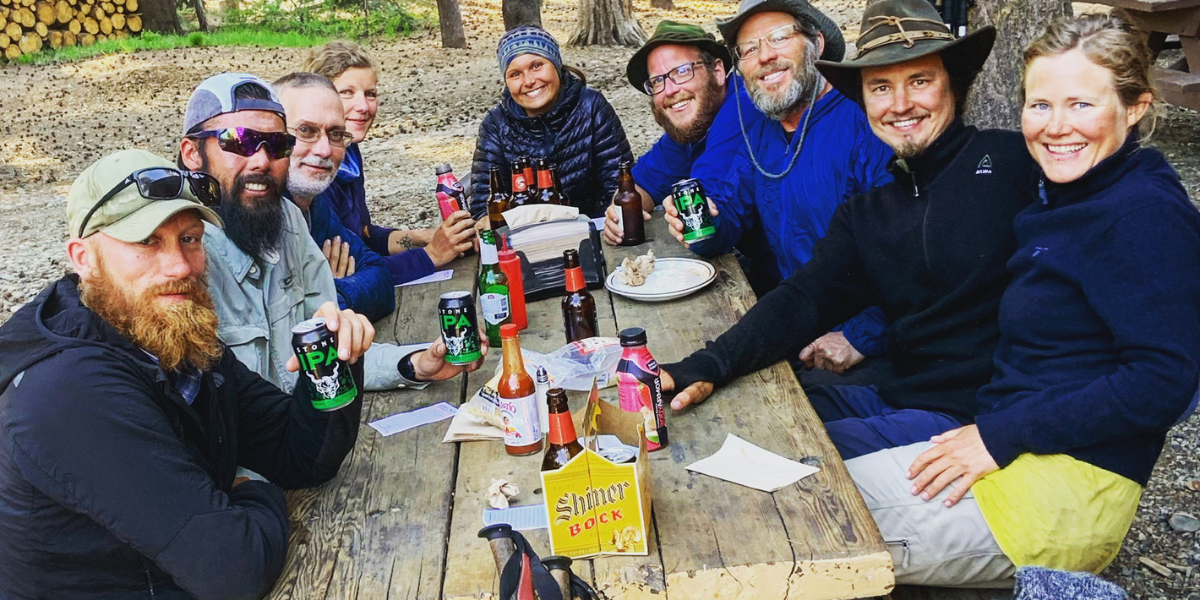
Visit our site to learn more about how Vermilion Valley Resort can support your JMT adventure. Whether you’re still dreaming or already packing, we’re here to help you make it real.
And when you finally walk through our doors, we’ll be waiting with a cold drink, a hot meal, and a whole lot of trail love.
- Start early with permits and planning. Many hikers spend a year or more preparing for this type of adventure.
- Train smart so your body doesn't give out on you before you finish the trail.
- Resupply wisely. A neatly packed resupply from home, or a full basket of new treats, is what will keep you going to the end. Many hikers find their tastes change while hiking, so pack a variety of snacks so that you have food you actually want to eat!
- Stay open to change. You will encounter something unexpected along the trail. Adaptability will be the key to your hiking success.
- Soak it in—every mile, every moment.

